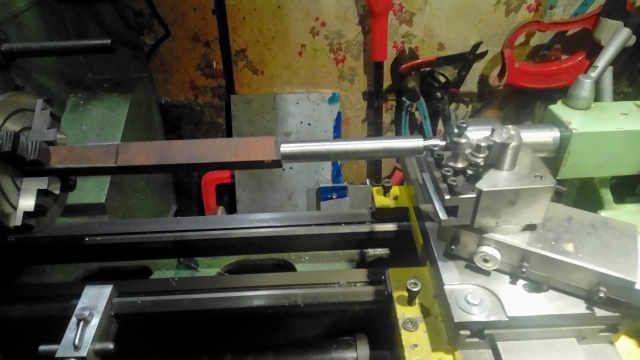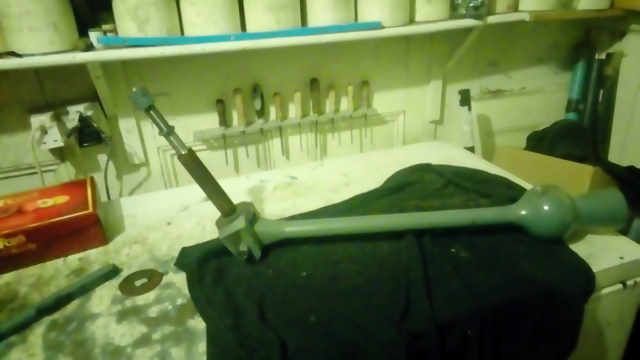There's other reasons for running the Myford backwards as well as screwcutting.
When I picked up a part built Quorn, I needed to re-cut the taper in the main spindle.
I set the whole spindle tube up in a couple of fixes steadies, so the spindle ran in its own bearings.
The taper was re-cut to get it central again, correcting the original builder's error; The top slide was in the normal position and used conventionally with a boring tool.
Whilst the top slide was set over, it made sense to turn up more arbors for the grinding wheels.
Yes I could have cut the tapers conventionally, with the tool at the front of the work, but that would mean the thin end would be at the chuck, and I couldn't easily turn the taper, parallel portion and the thread on the thin end, all at the same setting.
By running the lathe in reverse, I could cut on the back of the workpiece, have the thick end at the chuck, turn the parallel section(s) and also add the thread at the end with a Herbert die head, and everything was guaranteed concentric.
A drawbar in the 4 jaw is easy, as the throat through the chuck is larger than the hole through the backplate, so a simple washer, threaded rod and a nut will suffice.
The 3 jaw (Griptru) is a bit more awkward, as the holes are the same size, however there is a gap between the front of the backplate register and the recess in the back of the chuck.
Again a large washer is used, but this time with a taper on the edge, and two large flats, such that it will fit sideways up the bore, and then cockle over into position.
It does obviously restrict the length of a workpiece, but no danger of the chuck coming loose whatever work you are doing.
Bill
 peak4.
peak4.





